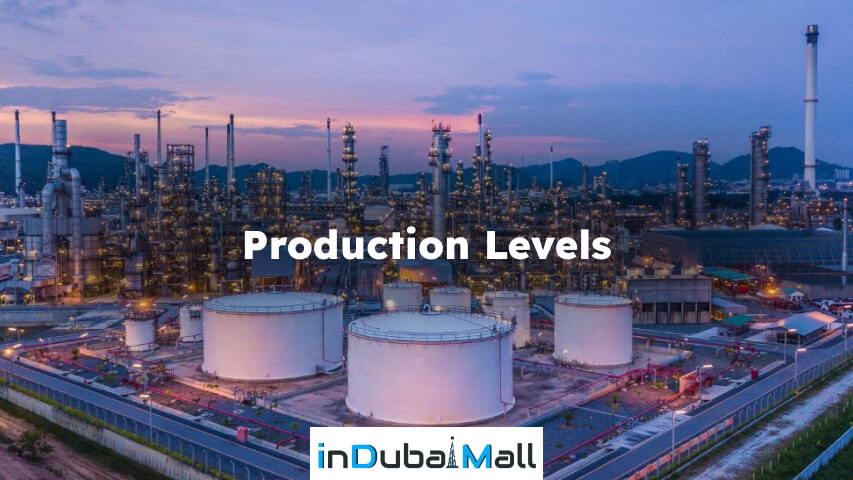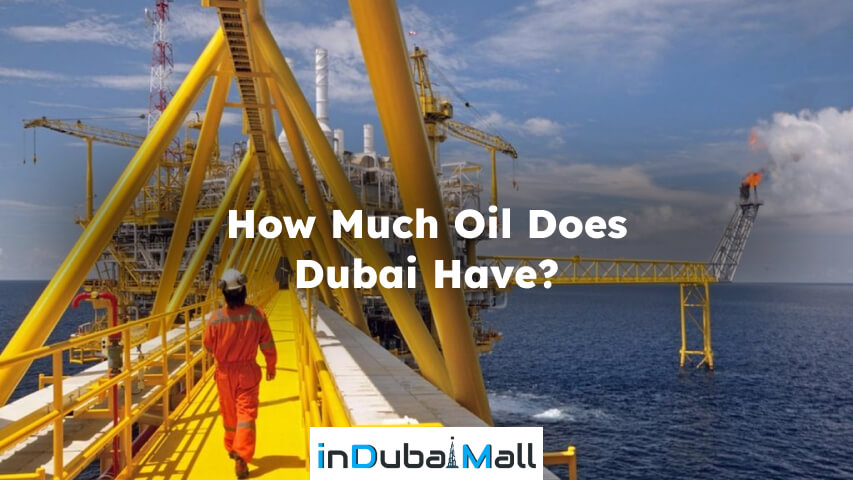Oil is one of the most important resources globally, accounting for about 3% of the gross domestic product. It is found in many products, such as medicine, clothing, vehicle fuel, solar panels, personal protective gear, plastics, chemicals, and fertilizers. Currently, the price of oil is nearly USD 100 per barrel. Does Dubai have oil? The city-state of Dubai has minimal oil reserves, yet it is becoming wealthy as an expanding financial and trading center for the Gulf and Africa. Hydrocarbons account for less than 5 percent of Dubai economy. Additionally, oil revenues were projected to be negligible by 2010. By then, the ruling al-Maktoum family aims for the emirate to evolve into a Middle Eastern version of Singapore, offering financial, leisure, and logistical services to the Gulf and Africa. Let read the following parts of this study on indubaimall to get more information about Dubai oil.
Dubai Oil Industry
Does Dubai have oil? When discussing Dubai, it’s important to note that the offshore Fateh field was the site of the first oil discovery in 1966. Oil exports from Dubai began in 1969, with the Fateh field that was exporting over 180,000 barrels for the first time. In June 1978, oil drilling exploratory wells at Falah began production. With more than 4 billion barrels of oil, Dubai ranks as the second-largest oil producer in the United Arab Emirates. The peak of Dubai oil production occurred in 1991, reaching 410,000 barrels per day, and efforts continue to sustain this level. Numerous organizations play a role in the UAE’s extensive oil industry, including the Emirates National Oil Company, commonly referred to as ENOC. The expansion of the oil sector resulted in the creation of important institutions. In 1999, the Emirates National Oil Company (ENOC), owned by the Dubai government, launched its first oil refinery. This facility, costing Dh1.5 billion and capable of producing 120,000 barrels per day, represented a major advancement in the development of Dubai’s oil industry.

Key Oil Fields in Dubai
Dubai offshore oil fields have played a crucial role in driving the emirate’s economic development. The city oversees five key offshore oil fields that two of the Dubai oil fields are in the following part:
Fateh Oil Field
On Dubai oil fields map, the Fateh Oil Field is located about 60 miles (97 km) offshore from Dubai, within the territorial waters of the emirate of Dubai in the Persian Gulf. It is operated by Dubai Petroleum. It is the oldest and biggest facility, found in 1966 and in operation since 1969, features 47 platforms. This includes 31 satellite wellheads and 16 central complex platforms.

Al Jalila Field
The Al-Jalila Field is an offshore oil field situated in the Persian Gulf, near the United Arab Emirates. As discovered in early 2010, the production was anticipated to start in late 2014, as stated by the UAE government. The field is named after the daughter of Mohammed bin Rashid Al Maktoum, the current Prime Minister of the UAE. Currently, the Al-Jalila platform is under construction and is managed by Dubai Petroleum (NOC). Al Jalila Field is the latest addition that includes two platforms and three underwater pipelines. In the last five years, there have been just three major projects in Dubai offshore fields. The latest development is by DPE, which has begun building facilities at the offshore Jalilah field. This field is situated 90 kilometers from Dubai coast, with a water depth of 60 meters. It was initially discovered in February 2010, near the existing Rashid field.
Current Oil Production and Reserves
Dubai has approximately 4 billion barrels of oil reserves. Although this is much less than Abu Dhabi reserves, but the oil in Dubai played a crucial role in the emirate’s early economic growth.
Production Levels
Dubai ranks among the top global cities for energy consumption per person, and its swift population increase has led to a demand that greatly exceeds local oil production. Dubai oil production is believed to have reached its highest point of approximately 410,000 barrels per day (b/d) in 1991, after which it has experienced a steady decline. Currently, Dubai’s oil production per day is estimated to be extracting crude oil at a rate between 50,000 and 70,000 b/d.


Proven Reserves
The majority of oil reserves in the United Arab Emirates are found in Abu Dhabi that contains around 92 billion barrels. In contrast, Dubai has roughly 4 billion barrels of oil reserves. Although this amount is much less than that of Abu Dhabi, but Dubai oil reserves played a crucial role in the emirate’s early economic growth. Additionally, Sharjah has about 1.5 billion barrels of oil reserves.
How Much Oil Does Dubai Have?
Dubai’s oil reserves are smaller than Abu Dhabi’s, but it was the key to the emirate’s growth. Does Dubai have oil wells? In other words, does Dubai still have oil? It has 4 billion barrels. Oil was discovered in the 1960s in Dubai, and it is providing funds for the rapid development of infrastructure such as roads and airports that was turning Dubai into a global trade and tourism center. Dubai oil reserves 2025 are mainly offshore, in fields like Fateh, and have been producing for decades. Despite the limited size of oil, Dubai has used oil revenue to diversify its economy, while it was focusing on trade, tourism, finance, and real estate. Free zones like Jebel Ali and the Dubai International Financial Centre have attracted foreign investment, helping to stabilize the economy against oil price changes. Additionally, Dubai is investing in renewable energy, such as the large Mohammed bin Rashid Al Maktoum Solar Park in order to promote sustainable growth and reduce its carbon footprint. While Dubai’s oil reserves are modest compared to Abu Dhabi’s 92 Billion barrels, they play a pivotal role in the Emirate’s initial economic developments.





















